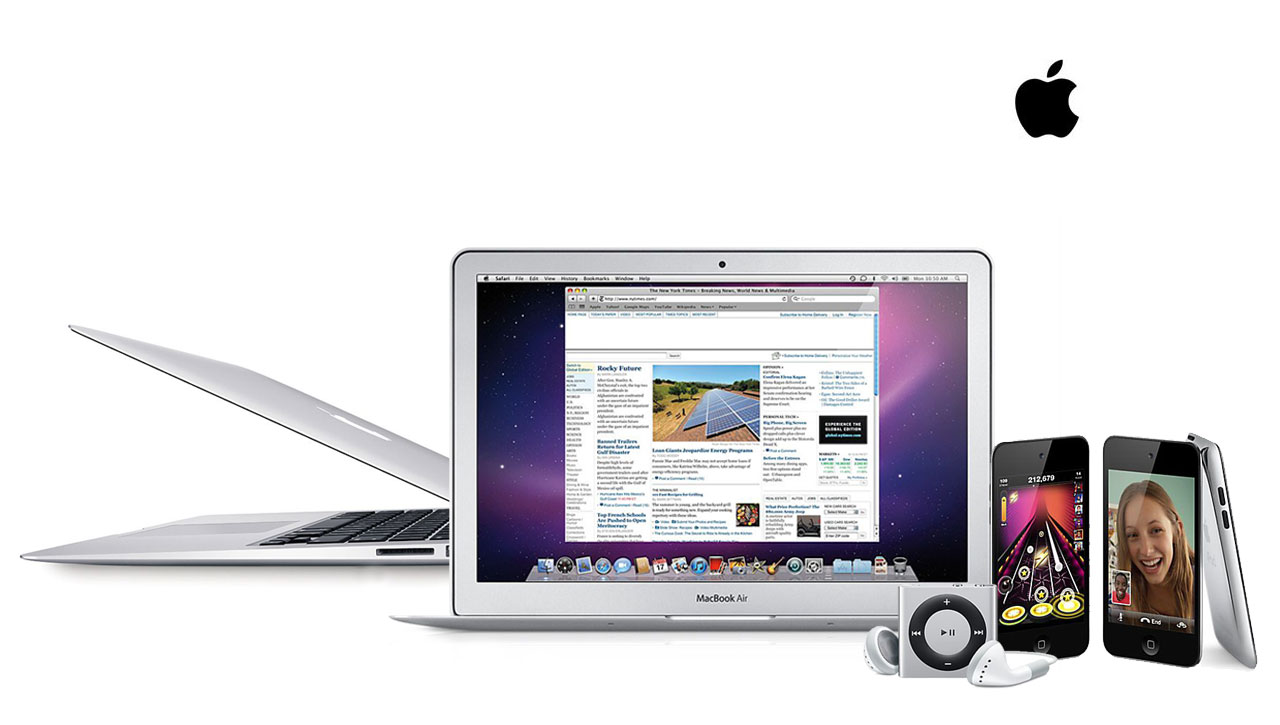
A sure sign that I’m something of an GEEK is that I find the company’s current product line a tad annoying – not because of the products but the ever-so-slight mess (in my not-so-humble opinion) of the brand names that have been attached to them.
It’s all a far cry from the simple four-quadrant product matrix introduced by Steve Jobs soon after his return to Apple Computers Inc in 1997: his determination for the company to focus on producing just a Pro Desktop, Consumer Desktop, Pro Laptop and Consumer Laptop. The naming was just as focused: Pro products were prefixed with “Power” (after the PowerPC chips inside them), Consumer products were prefixed with “i” (for “internet”, “individual”, etc); desktops ended with “Mac” and laptops went with “Book”. Hence: PowerMac (Pro Desktop), PowerBook (Pro Laptop), iMac (Consumer Desktop) and iBook (Consumer Laptop).
Two decades on, Apple Inc’s product line is now dominated by smartphones, tablet computers, music players and watches. (That’s why, of course, they dropped “Computers” from the company name back in 2007.) I accept that any company’s product lines are bound to evolve over time; the problem to me is that someone’s simply taken their eyes off the wider picture when it comes to what they call them.
For example: “Air” was originally introduced to signify how much thinner and/or lighter a particular product was compared with its predecessors; that’s been lost in a world where the 2016 MacBook is lighter than either size of MacBook Air. Nor does Apple’s current product line include any earlier versions of the iPad against which we can now compare the iPad Air 2 – which is precisely the same weight at the new 9.7” iPad Pro.
Sadly, this is an itch I’ve found really difficult not to scratch. I’ve definitely spent far too much of my time coming up with some kind of solution which – if only to justify what would otherwise be useless procrastination on my part – I’d like to now share with the world. And Apple Inc., obviously.
My guiding principle.
One assumption I made from the start is that Apple now divides its customers into three overlapping categories: Pro, Consumer and a separate subdivision of the latter best described as Entry level – people interested in the company’s products, but happy with simpler, less expensive (ie, older) versions which nevertheless still do what’s required of them.
With essentially a customer category on either side, I’ve chosen to make the Consumer category the default, benchmark line against which Pro and Entry Level products are compared and named – with “Pro”, obviously, attached to the former, while I’ve opted to apply “Mini” to identify the latter. And yes, I’ve opted to use this approach even with the iPhones.
So, here are my suggestions for a revised product matrix:
Desktops:
Entry level: Mac Mini
Consumer: Mac (formerly iMac)
Pro: Mac Pro
Yes, I know that the iMac brand has been with us since 1998; indeed, it was the only product name to survive the 2006 product rebranding which coincided with Apple’s transition from PowerPC to Intel processors. However, while the “i” prefix was originally pushed as referencing “internet” and “individuality”, it strikes me now as being primarily associated with portable devices – iPods, iPhones and iPads. The iMac is a brilliant all-in-one computer, but it’s hardly the most “portable” computer, is it?
Result: Choosing a desktop now comes down to answering one question: which category (Entry level, Consumer or Pro)?
Laptops:
Entry level: MacBook Mini (formerly the 11” MacBook Air)
Consumer: Macbook (2016) 12”
Pro: MacBook Pro 13”/15” (formerly MacBook Pro with Retina Display)
Yes, I’d retire the 13” MacBook Air; also, given that Retina Displays are now standard across most of the product line (bar the aforementioned MacBook Air), it’s now hardly a feature worth highlighting in the name. As per now, the larger-screened MacBook Pro would also be a more powerful machine overall.
Result: Choosing a laptop comes down to answering two questions: which category (Entry level, Consumer or Pro), and then (at least within the Pro category) which size of screen?
Tablets:
Entry level: iPad Mini (formerly iPad Mini 2)
Consumer: iPad 7.9”/9.7” (formerly iPad Mini 4 and iPad Air 2)
Pro: iPad Pro 9.7”/12.9”
Controversial, perhaps, but I’d distinguish between the second and fourth generations of iPad Mini in this way. Also, dropping the numerals from the iPad line would rid us of the question of what happened to the iPad Mini 3?
Result: Choosing an tablet comes down to answering two questions: which type (Entry level, Consumer or Pro), and then (at least within Consumer and Pro categories) which size?
Phones:
Entry level: iPhone Mini (formerly iPhone SE)
Consumer: iPhone (formerly iPhone 6/6S)
Pro: iPhone Pro (formerly iPhone 6 Plus/6S Plus)
I accept that this is, arguably, the most controversial part of my rebranding, as I’m (for the moment) essentially using size alone to distinguish a Pro Smartphone from a Consumer one. Perhaps clearer distinctions in terms of features/benefits will come with the much-rumoured iPhone 7. Except, of course, I wouldn’t want them to call it that – it’s time to drop the numbers, focus on the brand and distinguish any models by the year of their release.
Result: Choosing an iPhone comes down to answering one question: which category – Entry level, Consumer or Pro?